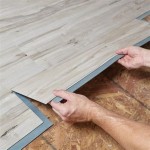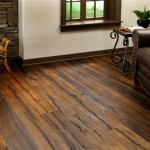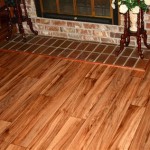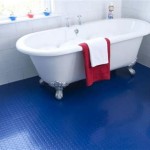Installing Vinyl Plank Flooring Over Particle Board: A Comprehensive Guide
Installing vinyl plank flooring over particle board is a common project undertaken by homeowners seeking to upgrade their floors. Vinyl plank offers durability, water resistance, and a stylish aesthetic, making it a popular choice for various spaces. However, successfully installing vinyl plank over particle board requires careful preparation and adherence to specific guidelines. Understanding the process ensures a smooth installation and a long-lasting, beautiful floor.
Understanding Particle Board and Its Limitations
Particle board, also known as chipboard, is a manufactured wood panel created by pressing wood chips together with adhesives. While economical and readily available, particle board has limitations that impact flooring installations. It is known for its susceptibility to moisture damage, which can lead to warping, swelling, and structural instability. Moreover, its surface can be uneven and porous, requiring careful preparation to ensure a stable and smooth base for the vinyl plank.
Essential Preparation Steps for a Successful Installation
Installing vinyl plank flooring over particle board necessitates meticulous preparation:
1. Evaluating the Existing Particle Board:
Before starting the installation, thoroughly inspect the particle board substrate. Ensure it is structurally sound, free from cracks, and well-attached to the subfloor. Assess for any signs of moisture damage, such as warping, swelling, or soft spots. If you discover any issues, repair them before proceeding.
2. Leveling the Surface:
Vinyl plank flooring requires a level surface for a seamless installation. Leveling compound is often necessary to address unevenness and create a smooth base. Apply a thin layer of leveling compound, ensuring it dries completely before proceeding to the next step.
3. Moisture Barrier:
Particle board is prone to moisture damage, so installing a moisture barrier is crucial. This thin membrane acts as a protective layer preventing moisture from infiltrating the substrate. Apply a suitable moisture barrier, such as a polyethylene sheet, over the leveled particle board, ensuring it overlaps by at least 6 inches at the seams.
4. Underlayment:
Underlayment is a crucial component of vinyl plank installations, providing additional cushioning, sound insulation, and a smooth surface for the planks. Select an underlayment specifically designed for vinyl plank flooring, ensuring it is compatible with the particle board substrate.
Vinyl Plank Installation Techniques:
With the substrate properly prepared, you can move on to the vinyl plank installation:
1. Acclimation:
Before laying the vinyl plank, acclimate the planks to the room temperature and humidity for at least 48 hours. This step allows the planks to adjust to their environment, minimizing expansion and contraction during installation.
2. Starting the Installation:
Begin the installation process by laying the first row of planks along the longest wall of the room. Use a utility knife to trim the planks to fit the space. Ensure the planks are tightly fitted together, preventing gaps or unevenness.
3. Stapling or Gluing:
Vinyl plank flooring can be installed using two primary methods: stapling and gluing. Stapling involves attaching planks to the underlayment using a staple gun, while gluing requires applying an adhesive to the planks and pressing them into place. The method you choose depends on your preferences, the type of vinyl planks, and the manufacturer's recommendations.
4. Finishing the Installation:
Continue laying the planks, ensuring they are aligned, and the rows are interlocked. If you encounter obstructions like doorways or walls, carefully measure and cut the planks to accommodate these spaces.
5. Transition Strips:
Transition strips are essential for transitioning between different flooring types or levels. These strips provide a smooth and visually appealing transition, maintaining continuity in the flow of the floor.
Installing vinyl plank flooring over particle board requires careful preparation and specific installation techniques. Understanding the limitations of particle board and implementing necessary steps, such as leveling, creating a moisture barrier, and using appropriate underlayment, is crucial for a successful and lasting floor installation.

Can You Put Vinyl Plank Over Particle Board Ready To Diy

Can You Put Vinyl Plank Over Particle Board Ready To Diy

Can You Put Vinyl Plank Over Particle Board Ready To Diy

Can You Put Vinyl Plank Over Particle Board Ready To Diy

How To Prevent Flooring Problems Prior Installation

Can You Put Laminate Over Particle Board Ready To Diy

Instructions For Installation Of Spc Hybrid Vinyl Plank Flooring

Can You Lay Vinyl Floor Over Osb Ready To Diy
Luxury Vinyl Plank Flooring Laying Over Particle Board Subfloor Diy Home Improvement Forum

How To Install Vinyl Plank Flooring On Plywood Floor








